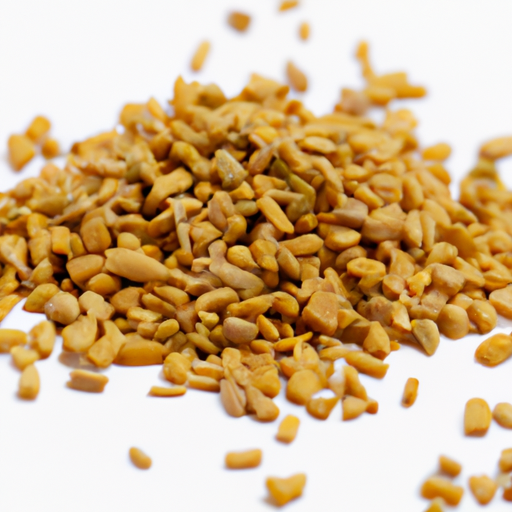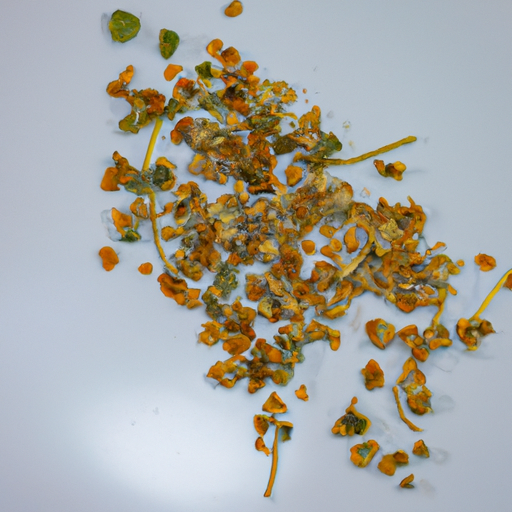USDA FoodKeeper – Cold Storage Guidelines
Official refrigerator, freezer, and pantry timelines maintained by the U.S. Department of Agriculture.
Visit USDA FoodKeeperEvaluating Fenugreek safety requires considering storage conditions, initial freshness, and potential contamination. These factors may not be obvious from appearance when determining Fenugreek safety.
Not sure about your fenugreek? Check your exact situation →
Last reviewed: January 2026
Reviewed by the Can I Eat Expired Editorial Team using official USDA, FDA, and CDC food safety guidance
Generally safe for up to 30 days if properly stored and showing no spoilage signs.
Every situation is different. Get a personalized food safety verdict for your fenugreek based on the date, storage, and condition — in seconds.
👉 Check Food Safety Now

Pantry
Room temperature
Store dried leaves in an airtight container away from moisture
180 days
Moldy or musty smell, discolored or slimy leaves
Can be used in spice blends, teas, or for brewing fenugreek water
Celery leaves or mustard greens
Every situation is different. Get a personalized food safety verdict for your fenugreek based on the date, storage, and condition — in seconds.
👉 Check Food Safety NowSure thing! Expiration dates and best quality dates can be a bit confusing when it comes to fenugreek. Expiration dates are about safety. Eating fenugreek after the expiration date may risk your health. It's a definite no-go. Best quality dates, on the other hand, refer to when the spice is at its peak flavor. Fenugreek might start losing its potency and aroma after the best quality date, but it's still safe to eat. For example, if the best quality date is six months from when you bought it, the spice might not be as flavorful past that point. Personally, I usually go by the best quality date for spices like fenugreek. I want my dishes to have that full, rich flavor, so I try to use it before that date. But if I miss it by a bit, I'll still use it, maybe just adding a bit extra to compensate for any loss in flavor. It's all about finding that balance between safety and taste!
To determine if fenugreek has gone bad, look for any signs of mold, discoloration, or an off smell. Fresh fenugreek should have a vibrant green color, a strong aroma, and a slightly bitter taste. If the leaves appear wilted, have dark spots, or emit a musty odor, it's best to discard them.
Hey there! Let's chat about fenugreek and food safety. Fenugreek is a fantastic spice commonly used in Indian cuisine, but like any food, it can carry some risks if not handled properly. One major concern with fenugreek is the potential for foodborne illness if it's not stored or cooked correctly. Symptoms of foodborne illness can range from stomach cramps and nausea to more serious issues like vomiting or diarrhea. So, it's essential to be mindful of how you handle and prepare fenugreek to avoid any of these unpleasant outcomes. To stay safe, make sure to store your fenugreek in a cool, dry place away from direct sunlight. When cooking with fenugreek, always wash your hands before and after handling it, and ensure it's cooked thoroughly to kill off any harmful bacteria. Also, be cautious when buying fenugreek in bulk from open bins, as there might be a higher risk of contamination. I personally love using fenugreek in my curries and stews, so staying safe while enjoying its delicious flavor is definitely a top priority for me! Just a little extra care can go a long way in keeping you and your loved ones healthy.
Hey there! Storing fenugreek can be a breeze with a few handy tips. To keep those lovely seeds or leaves fresh for longer, consider these hacks: 1. **Air-Tight Containers:** Store fenugreek seeds or leaves in air-tight containers to maintain their flavor and aroma. Mason jars or small glass containers work great! 2. **Cool, Dark Place:** Keep your fenugreek away from heat and light to prevent them from losing their potency. A pantry or a cupboard works well. 3. **Labeling:** If you're a fan of bulk buying like me, label your containers with the purchase date. This helps you keep track of freshness and usage. 4. **Freezing Method:** You can also freeze fresh fenugreek leaves by washing, drying, and storing them in a zip-lock bag. It's a great way to have them handy for longer. 5. **DIY Herb Holder:** Get creative and make your herb holder by repurposing a spice rack or a small drawer organizer. It's not only functional but also adds a touch of organization to your kitchen! I've tried these methods myself, and they've worked wonders for keeping my fenugreek fresh and ready to use. Give them a go and see what works best for you!
Hey there! Let's talk about fenugreek - it's not just a spice, it's a tiny powerhouse of flavor and health benefits! Did you know that fenugreek has been used for centuries in cooking and traditional medicine? It's got this warm, slightly sweet flavor that can add depth to curries, stews, and even bread. In some cultures, fenugreek is seen as a symbol of good luck and prosperity. For example, in Indian weddings, fenugreek seeds are sometimes included in the decorations to bring good fortune to the newlyweds. How cool is that? And here's a fun fact: fenugreek is not just for cooking. It's also used in skincare products for its anti-inflammatory properties. Who knew a humble spice could do so much? So next time you sprinkle some fenugreek into your dish, remember all the history and cultural significance packed into those tiny seeds. Happy cooking!
Fenugreek stored in a plastic bag for a week is safe to consume if it appears dry, has no mold growth, and retains its aroma. However, for optimal quality, consider transferring it to an airtight container to prevent moisture buildup and extend its shelf life.
When stored in a glass jar in a pantry, Fenugreek can last up to 180 days before its quality starts to deteriorate. To maintain freshness, ensure the jar is tightly sealed to prevent exposure to light and moisture.
If Fenugreek was left out at room temperature overnight, it's best to discard it to avoid the risk of foodborne illness. Bacteria can multiply rapidly in herbs like Fenugreek when left unrefrigerated for extended periods, compromising its safety.
Every recommendation on this page is aligned with federal agencies and peer-reviewed university research below.
Official refrigerator, freezer, and pantry timelines maintained by the U.S. Department of Agriculture.
Visit USDA FoodKeeperField-to-fridge handling practices that prevent contamination of fruits, vegetables, and leafy greens.
Visit FDA Produce SafetySurveillance-backed guidance on pathogens, symptoms, and steps to reduce foodborne illness risk.
Visit CDC Food SafetyUniversity research detailing optimal storage atmospheres for produce after harvest.
Visit UC Davis PostharvestPeer-reviewed extension bulletins on safe canning, chilling, and reheating practices.
Visit Penn State ExtensionNeed deeper reading? Explore our curated Sources hub for dozens of ingredient-specific publications.
Cooking Ingredients
View expiration date and storage guide →
Baking Supplies
View expiration date and storage guide →
Grains & Pasta
View expiration date and storage guide →
Instant Foods
View expiration date and storage guide →
Condiments & Spices
View expiration date and storage guide →
Grains & Pasta
View expiration date and storage guide →
Fruits & Vegetables
View expiration date and storage guide →
Condiments & Spices
View expiration date and storage guide →
Sauces and Marinades
View expiration date and storage guide →
Important: These are general guidelines based on authoritative sources listed above. Always use your best judgment and when in doubt, throw it out. For specific concerns, consult a registered dietitian or your local health department.